
October 13, 2025
Dami Lee on the Organized Chaos That is Tokyo
Is Tokyo ugly?
This article was originally published as “Dami Lee on the Organized Chaos That is Tokyo” in Metropolis Magazine, “Designing the City,” Spring 2025. Read the full issue here.
“Why are you not excited about this? This is so cool!” Dami Lee laughs, recalling her early frustrations when talking about architecture with her friends, only to be met with bored expressions.

Now, as both a licensed architect and storyteller, she’s found a way to bridge that gap, using her YouTube channel to make architectural concepts accessible, engaging and fun. She is also the owner of Nollistudio, a multidisciplinary creative team dedicated to exploring the built environment and its profound impact on society and culture.
The Vancouver-based architect has visited Japan multiple times—including twice in 2024—and is even considering setting up a base in Tokyo. That connection is reflected in her YouTube content, exploring topics ranging from Japanese public toilets and the Metabolism movement to the cyberpunk architecture of Akira.
I sat down with Dami Lee to discuss the cityscapes that intrigue her, the buildings that left a lasting impact, Tokyo’s approach to greenery and how she thinks about beauty in the built environment.
What was your impression of Tokyo?
Dami Lee:
“Organized chaos” is the best way to describe it.
Coming from Vancouver, which is much smaller and less dense, I was expecting a stressful environment, but I felt very calm. Tokyo has all the benefits of a megacity with fewer of the usual problems. Of course, I’m not commuting during rush hour, so I’m sure there are different perspectives, but I really enjoy it here.
The design culture in Tokyo is fantastic. There’s such immaculate attention to detail, which leads to a fascinating design culture and extremely high-quality architecture.
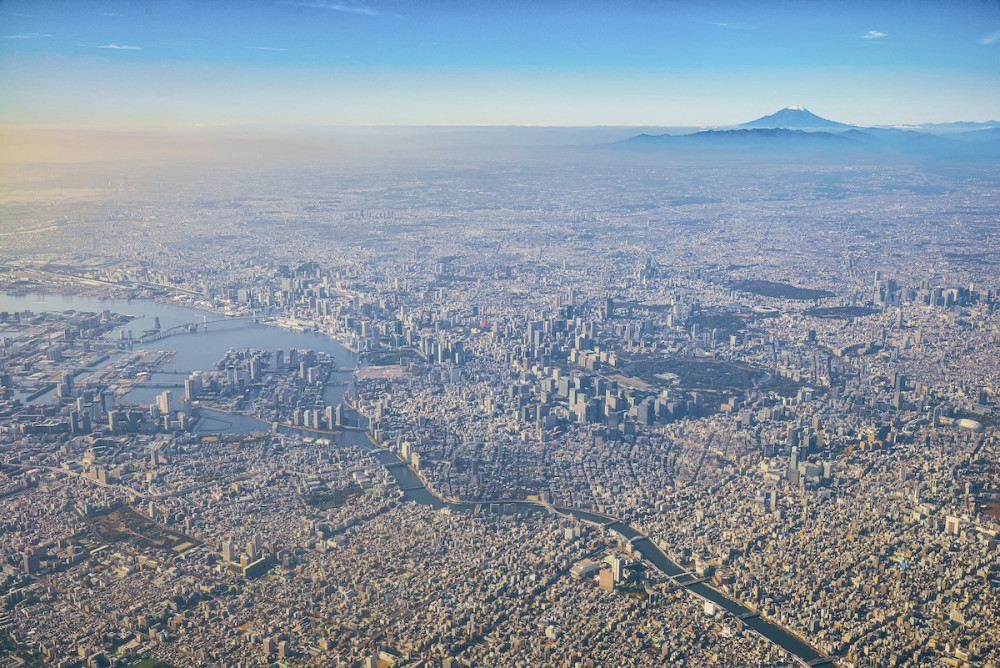
What are your favorite neighborhoods in Tokyo?
Dami Lee:
Sangenjaya is cool—there are lots of independent restaurants, and it has a lively, eclectic townscape. I also enjoy exploring Daikanyama. Yanaka is one of my favorites. I was there during Golden Week with my mom, and instead of heading to the usual tourist hotspots like Kyoto, we stayed in Tokyo and ended up in Yanaka. The neighborhood has a unique charm with its wooden houses, old temples, shrines and a historic cemetery. It has that “old Tokyo” vibe. There’s also an incredible museum called the Asakura Museum of Sculpture. It was once the artist’s home, and it’s beautifully designed around a garden with these massive, striking rocks.
What was the most memorable building in Tokyo?
Dami Lee:
The most impactful one for me is St. Mary’s Cathedral by Kenzo Tange, completed in 1964. What an experience! You walk in and think, “Oh my god. What have I done my whole life?”
Any architecture outside of Tokyo that stands out to you?
Dami Lee:
Teshima Art Museum. That was, hands down, my favorite architectural experience—out of all my architectural experiences, actually.
It’s located on Teshima Island in the Seto Inland Sea, designed by architect Ryue Nishizawa, with a single installation by artist Rei Naito. The building is a smooth concrete shell, with walls and floor blending seamlessly. Inside, water droplets emerge from the floor and move in this mesmerizing pattern. You walk in, and it’s just silent at first. Then you start to hear the droplets of water, the wind, and the rustling of the leaves. I could easily spend hours there.
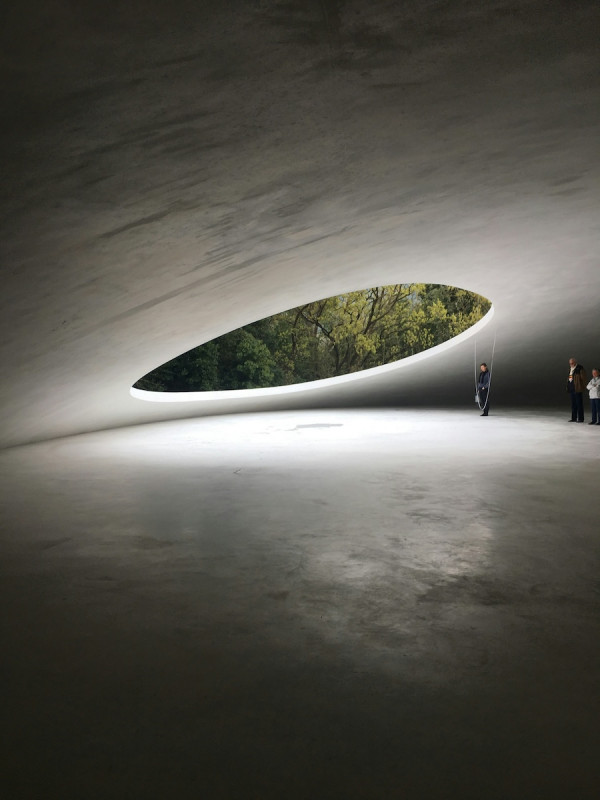
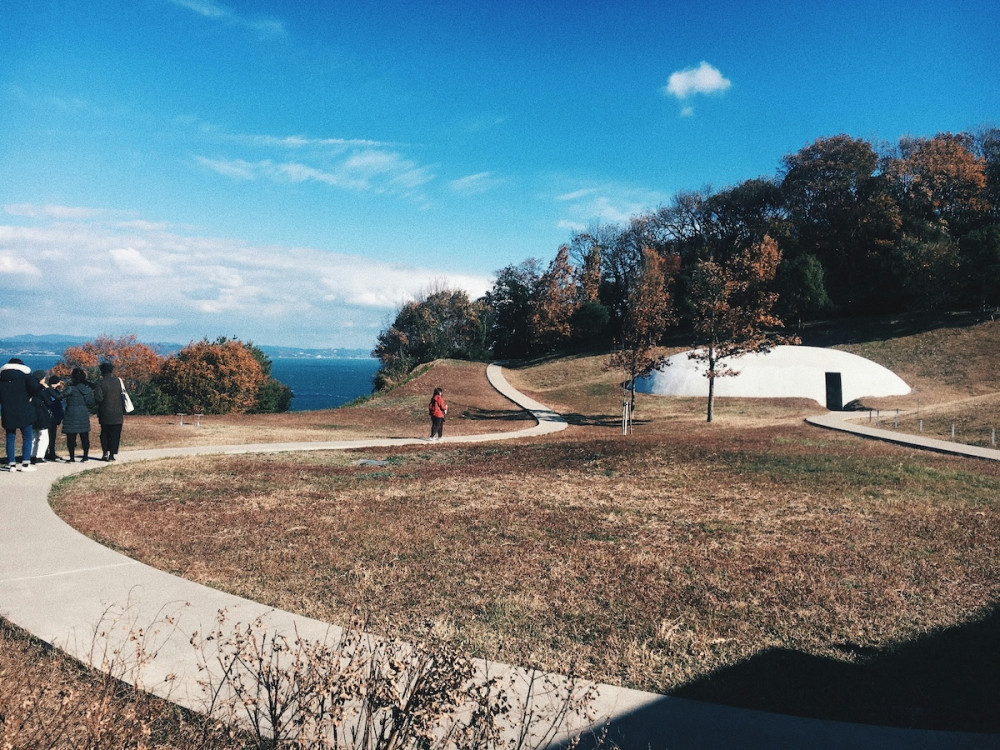
I think it’s a building that could only exist in a place like Teshima. It doesn’t have a function; it’s just there to be experienced. Also, it’s the kind of building that can only exist in a place like Japan, where people respect the rules, like not talking for an extended period of time [laughs]. You can’t actually build the same way in many places, because building codes would say you need to put guardrails all around the perimeter of the building, so people don’t climb it or bump their heads on the concrete.
Where would you like to visit next in Japan?
Dami Lee:
I’d love to visit Hiroshima next. I met a person from Hiroshima a while ago who was a third-generation atomic bomb survivor. Growing up in Hiroshima, he felt like he didn’t have an identity, and a big part of that is because so much of the city’s culture and history had been erased by the bomb.
I’ve always understood, in theory, that identity can be tied to the built environment, but hearing his personal experience made it feel much more real. I want to visit and learn more about the area firsthand.
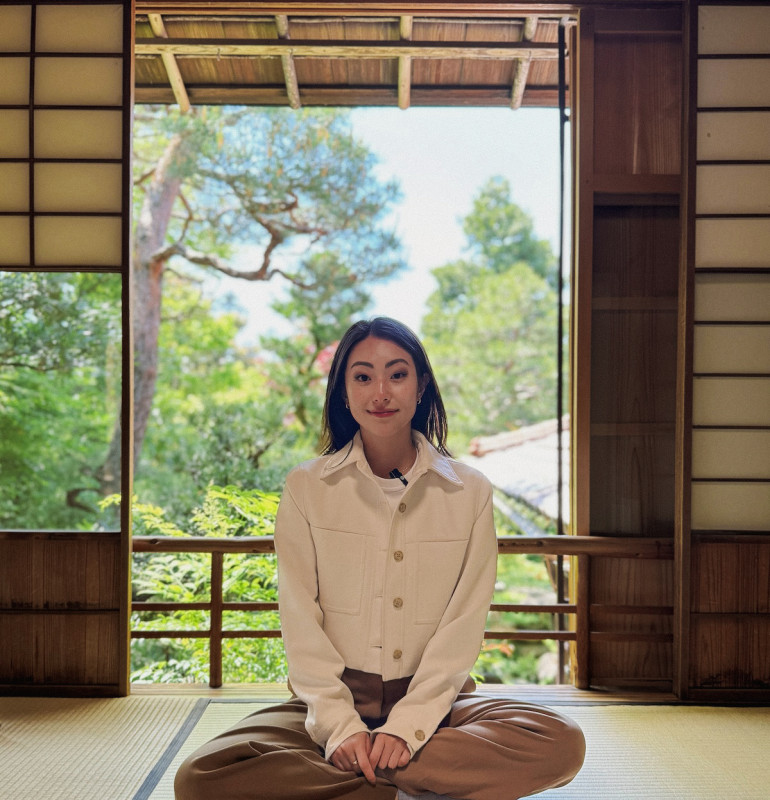
You’ve talked about many ambitious urban projects. Is there any in particular you wish would be realized?
Dami Lee:
Walking City by Archigram. I mean, the concept is completely unrealistic, completely unfeasible and totally crazy. But I love this idea of a city that roams around and trades resources with other walking or static cities. It has its own economy and infrastructure, you can work and build a career, but still travel and connect with other cities, experiencing different cultures.
The closest thing is like a nomadic community. I have a friend in Japan, Naru, who started a “mobile village” called Bochi Bochi. It’s 120 people who rent a plot of land and live there for parts of the year. They build things, grow food and even hunt, which is very cool.
Burning Man would be a good example as well. Burning Man is essentially a city where people go once a year, put up infrastructure and create their own rules.
It would be challenging to try to build it in real life but I think the process would force us to ask some really interesting questions… How do you divide the people? What’s the ideal number? What are the essentials in a city? What is a community? What is a happy life?
Tokyo is the largest urban area in the world. How do you view Tokyo’s approach to integrating nature into the city?
Dami Lee:
From my experience being in the city, I feel like Tokyo’s approach to integrating green space is unique. In European or North American cities, we have this tradition of having large, centralized green spaces, which are much easier to spot, especially in aerial photography.
Tokyo actually has a lot of green spaces, but they are more decentralized and subtle. There are many small parks, shrines, temples and gardens when you’re just walking around.
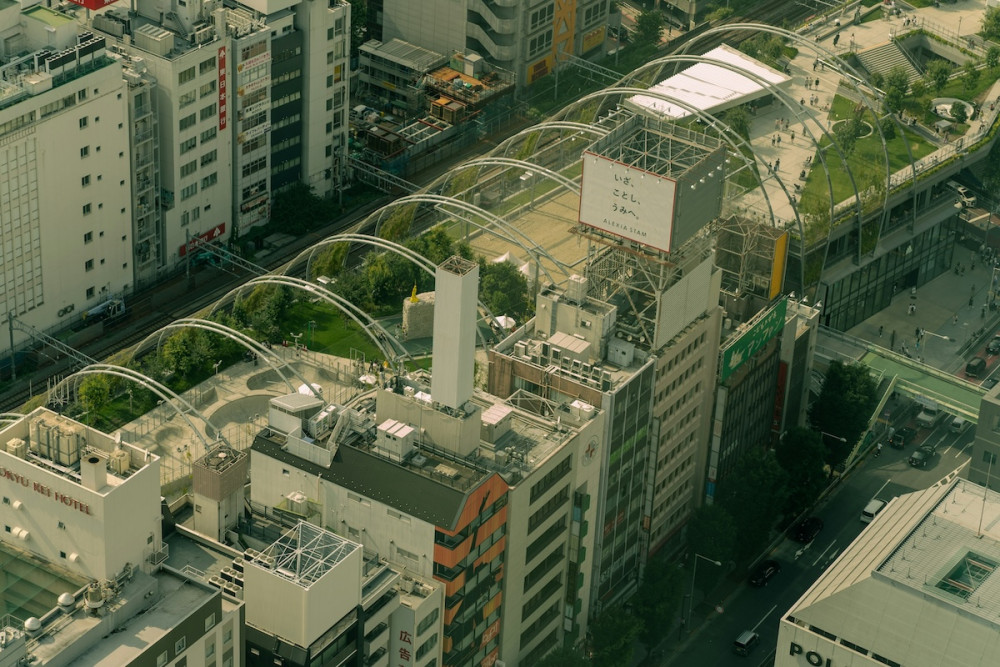
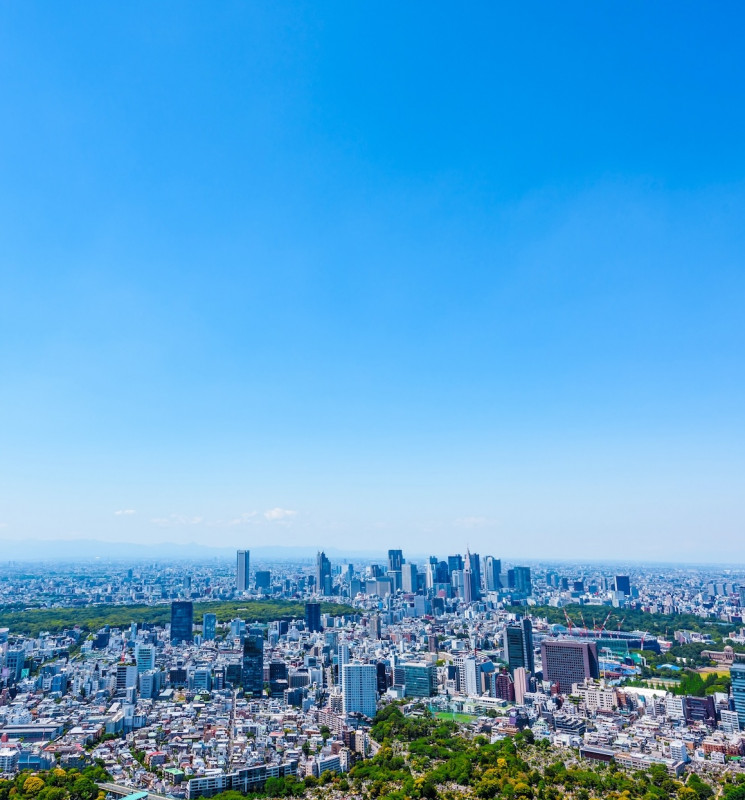
They’re more curated. Also, I think because Tokyo has a lot of neighborhoods and smaller buildings, there are a lot of opportunities for small empty spaces and little gardens, which I like a lot. I also really like some of the newer rooftop parks. While I know there are mixed reactions about it, I thought Miyashita Park was a super successful project. They did a really good job of integrating public space with private spaces. It’s a really complicated thing to do.
Not just greenery, but I like how Tokyo is utilizing a lot of these spaces that would otherwise be empty. For example, spaces under train tracks are often filled with bars and restaurants.
On a more philosophical note, uniformity and historical architecture often define a city’s aesthetic appeal. In your view, what makes a city beautiful? How should cities like Tokyo approach the idea of “beauty” in urban design?
Dami Lee:
That’s a great question and honestly, it’s not easy to answer.
The type of buildings that receive a lot of criticism that people call “ugly” are modernist buildings. But they came from a very specific period of the early 20th century and were a reaction to the elaborate styles like the Beaux-Arts which people were starting to think was too stuffy and extravagant. This was also a time of industrialization and when cities faced housing challenges due to rapid population growth. Modernist architecture treated buildings as functional structures to house people, or “machines for living in” by creating a more minimal aesthetic that stripped away decorative details that often made buildings too expensive for ordinary people. At the time, this was revolutionary and a lot of people thought it was beautiful.
Now, we see trends like “façadism,” where we hide modern structures behind a heritage facade. Some architects criticize this approach, arguing that buildings should have integrity and reflect the spirit of the time it was built, rather than being dressed up to please public taste, which can change. However, architects aren’t always perfect—they are known to sometimes make questionable choices [laughs].
Regarding homogenized streetscapes, North American and European cities often have much more strict design guidelines about what buildings in specific areas should be and look like. That’s one key difference with Japan, where building regulations are far more flexible. Areas like Kyoto might be an exception.
In Tokyo, the looser framework creates a unique kind of beauty. It’s an aggregate of very different things working within a very loose framework. I think that “quantity” creates a “quality” —this is a quote from Joseph Stalin [laughs]. It means that “having a large number of something can lead to effectiveness, regardless of the individual quality of each item”.




Aside from beauty, this flexibility has economic advantages. Because buildings in Tokyo aren’t forced into rigid zoning categories, you might get a combination of different functions, like a café, a bookstore, and an apartment all under one roof. This setup makes it easier for small businesses to operate since spaces can be adapted based on necessity and also be divided into smaller, more affordable units.
But Tokyo seems to be trending toward a more unified architectural style at the same time, with large, iconic buildings or masterplans with singular visual identities. A recent example might be Azabudai Hills. I was a bit sad to learn that this area replaced a neighborhood that was a really successful example of urban planning, with housing blocks full of character and green spaces in between. For foreigners, especially those from places where buildings just 20 years old can be considered “heritage” and protected by regulations (which can be its own problem), it’s interesting to see how fast Tokyo’s cityscape evolves.
Building fast is exciting but I hope they do it in a way that highlights the beauty that is unique to Tokyo. For me, the charm of Tokyo is in how it’s an aggregate of smaller, diverse elements that somehow work together. For example, the zakkyo buildings have very loose guidelines for signage placement, but otherwise, it’s a free for all.. and it makes up some of the most iconic scenes of Tokyo… Each building is different, but together they create a kind of “organized chaos”.
– – –
As someone who calls Tokyo and Japan home, my conversation with Dami Lee shed light on the fact that beauty here lies not in uniformity, but in the city’s organic, adaptive rhythm. Appreciating its ever-evolving nature while recognizing the status quo as a continuation of history requires a careful balance. That “organized chaos” thrives on a shared respect for the community—something we must continue to uphold. And, perhaps most exciting of all, Dami might soon be calling Tokyo home too.
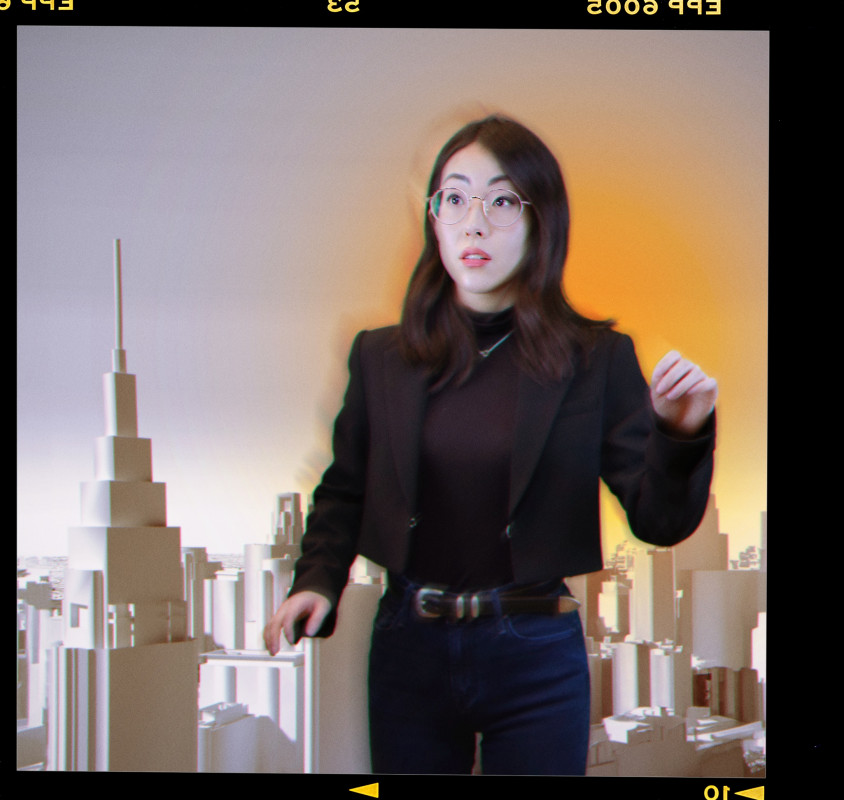
For more of Dami’s insights on architecture and design, explore her YouTube channel at @DamiLeeArch.
Architecture aficionado? Here are a few more stories to explore:
The Diversity of Tokyo’s Architecture
This Kyoto Bar is a “Sound Forest” Filled with Ambient Music and Exotic Plants
Where to Study in Tokyo? Top Study Hubs With Inspiring Architecture







